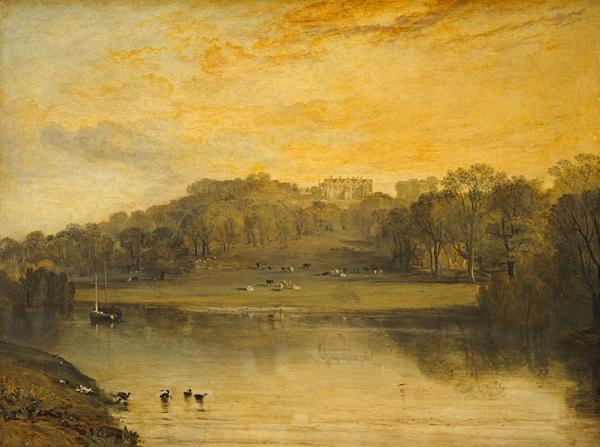About this artwork
Turner made his first extended tour of Scotland in July and August 1801. The Falls of Clyde, near Lanark, were an essential stop on his itinerary. The four waterfalls were considered a natural wonder and were much celebrated by artists and writers. Here Turner depicts Corra Linn, the lowest of the falls, using two sheets of paper to capture the breadth of the river. He uses a range of brown tones to create a study in light and shade. The foaming water pouring through the gully catches the brilliant sunlight, while the looming cliff casts a deep shadow.
Updated December 2022
see media-
artist:Joseph Mallord William Turner (1775 - 1851) English
-
title:The Falls of Clyde
-
date created:1801
-
materials:Watercolour over pencil with scraping out on two sheets of paper joined and laid down
-
measurements:41.30 x 52.10 cm
-
object type:
-
credit line:Henry Vaughan Bequest 1900
-
accession number:D NG 886
-
gallery:
-
subject:
Joseph Mallord William Turner
Joseph Mallord William Turner
Turner transformed the art of landscape painting in Britain. From detailed topographical studies to expansive, atmospheric vistas his works celebrate the diversity and emotive power of nature. He was born in Covent Garden, the son of a barber, and exhibited his earliest sketches in his father's...














